Torbay
Explore hidden histories, historic photos, and things you never knew about Torbay from the collections and archives of Historic England.
Discover your local listed buildings and places
Introducing some of Torbay's most historic sites, included in the National Heritage List for England. Some of these captions have been summarised by AI. Click through for the official List entry. Skip this section and go to place by numbers
Watcombe Park and Brunel Manor
Torquay
Isambard Kingdom Brunel and head gardener Alexander Forsyth designed Watcombe Park in the mid-19th century, incorporating ornamental landscapes and public gardens.
Princess Gardens and Royal Terrace Gardens
Torquay
Created in the late 19th century, the Princess and Royal Terrace Gardens in Torquay feature historic design by Major Garrett, including reclaimed land and exotic plantings reflecting...
Oldway Mansion
Paignton
Isaac Merritt Singer created Oldway Mansion in Paignton in the 19th century, later remodeled by his son. It's now a public park and council offices.
Roman Church of Our Lady, Help of Christians and St Denis
Torquay
A Roman Catholic parish church, by Joseph Hansom, begun in 1865, opened in 1869; tower completed in 1878. The attached presbytery and former convent buildings are separately listed.
Torre Abbey
Torquay
Torre Abbey was the wealthiest Premonstratensian abbey in England, established in 1196 by William Brewer, and is now a Grade I listed site in Torquay.
Barton Road Cemetery, Torquay
Torquay
A mid-C19 cemetery laid out for a commercial company by an unidentified architect. Read the official list entry to find out more.
Brixham War Memorial
Brixham
First and Second World War Memorial. Read the official list entry to find out more.
Explore more
Search for more listed placesTorbay through time
This timeline shows the first period of use for buildings and places on the National Heritage List for England, just one of the details recorded for every list entry. Click around to see how Torbay changes over time. Skip this section and go to aerial photos
Prehistoric Before AD 43
Prehistory covers a million years of human occupation before the Roman invasion and the introduction of writing. Primarily hunter-gatherers of several human species including Neanderthals, the peoples moved across Europe, hunting animals, exchanging ideas and developing complex culture and belief systems including burial rites and astronomical understanding, as at Stonehenge for example.
Medieval AD 1066 to AD 1540
This period, sometimes known as the Middle Ages, began with the Norman invasion in AD 1066. It saw a significant rise in military and defensive buildings such as castles and earthworks, as well as religious houses dominating a largely agricultural landscape.
The monarchy and Church dominated the period, which also saw the break with the Roman Catholic Church and the English reformation.
Post medieval AD 1540 to AD 1901
The Post-Medieval period brought seismic changes to life in England, with religious reformation leading to the democratization of worship and the destruction of hundreds of religious houses.
In parallel, there was a huge expansion of scientific study and enlightenment that permanently altered the nation's social structure and landscape. Industrialization and mass production lead to wider global trade, emigration, and immigration.
20th century AD 1901 to AD 2000
The 20th century saw an incredible expansion of England's transport networks, with suburban growth shadowing rapid infrastructural expansion. The establishment of state schools, hospitals, and modern technical colleges, with new architectural styles, radically changed the appearance of towns and cities.
Two catastrophic world wars and the 1918 pandemic also brought unprecedented change, altering England's built environment and social structures forever.
Prehistoric Before AD 43
Prehistory covers a million years of human occupation before the Roman invasion and the introduction of writing. Primarily hunter-gatherers of several human species including Neanderthals, the peoples moved across Europe, hunting animals, exchanging ideas and developing complex culture and belief systems including burial rites and astronomical understanding, as at Stonehenge for example.
Medieval AD 1066 to AD 1540
This period, sometimes known as the Middle Ages, began with the Norman invasion in AD 1066. It saw a significant rise in military and defensive buildings such as castles and earthworks, as well as religious houses dominating a largely agricultural landscape.
The monarchy and Church dominated the period, which also saw the break with the Roman Catholic Church and the English reformation.
Post medieval AD 1540 to AD 1901
The Post-Medieval period brought seismic changes to life in England, with religious reformation leading to the democratization of worship and the destruction of hundreds of religious houses.
In parallel, there was a huge expansion of scientific study and enlightenment that permanently altered the nation's social structure and landscape. Industrialization and mass production lead to wider global trade, emigration, and immigration.
20th century AD 1901 to AD 2000
The 20th century saw an incredible expansion of England's transport networks, with suburban growth shadowing rapid infrastructural expansion. The establishment of state schools, hospitals, and modern technical colleges, with new architectural styles, radically changed the appearance of towns and cities.
Two catastrophic world wars and the 1918 pandemic also brought unprecedented change, altering England's built environment and social structures forever.
Aerial photos of Torbay
Aerial photography helps reveal secrets of England's changing landscapes that are impossible to see from the ground. Skip this section and go to archive images
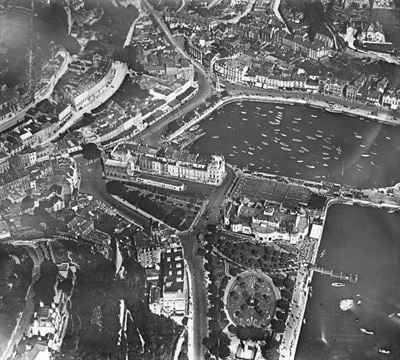
Totnes
The Old Harbour and Cary Green, Torquay, 1924
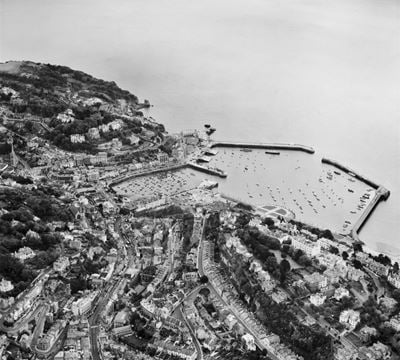
Torquay
The harbours, Torquay, 1952

Cockington
The village, Cockington, 1947
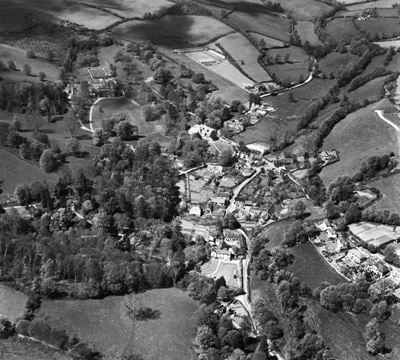
Cockington
The village, Cockington, 1948
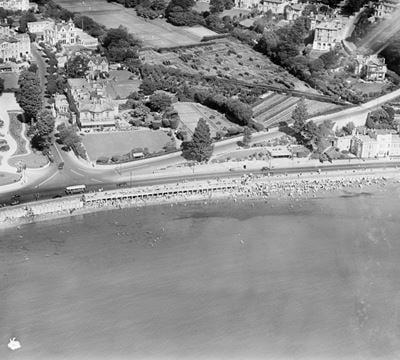
Torquay
Torbay Road and Tor Abbey Sands, Torquay, 1928
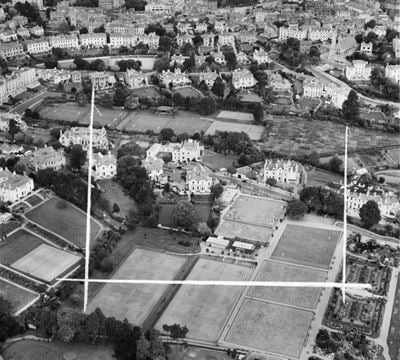
Torquay
Belgrave Road and Abbey Park, Torquay, 1952
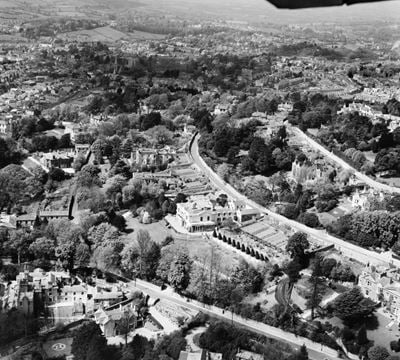
Torquay
Normount and adjacent properties on Middle Warberry Road, Torquay, 1948
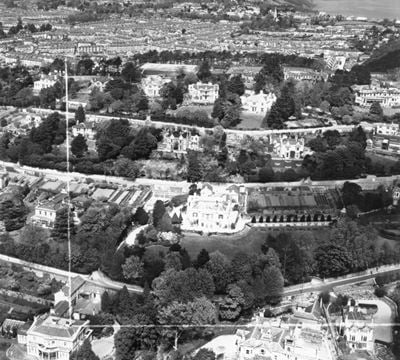
Torquay
Normount and adjacent properties on Middle Warberry Road, Torquay, 1948
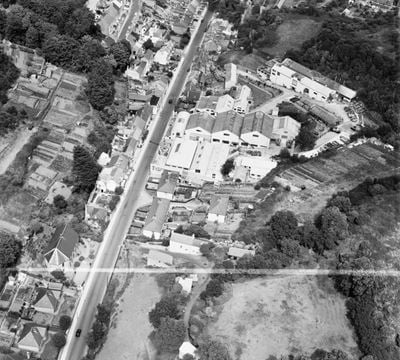
Brixham
The Torbay Paint Works, Brixham, 1950
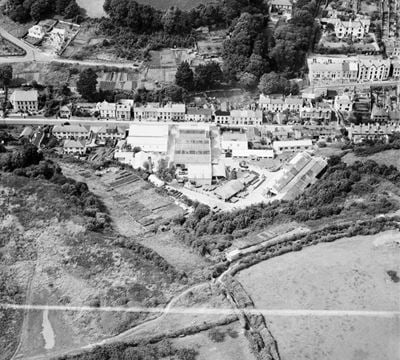
Brixham
The Torbay Paint Works, Brixham, 1950
Torbay in the Historic England Archive
The Historic England Archive cares for over 15 million images, dating from the 1850s to the present day. Discover stunning images of Torbay's past. Skip this section and go to stories about heritage
Charles George Harper Collection
Torbay
Date created: 1892 - 1933
Two fishermen talking outside a house in Brixham, where William of Orange is believed to have slept
John Gay Collection: Miscellaneous
Torbay
Date created: 1957
An informal portrait of 70 year old William John Harris of Brixham, wearing a flat cap and wool jacket, and in conversation whilst seated on a wooden...
John Gay Collection: Counties
Brixham, Torbay
Date created: 1950s
Fishermen landing the catch from a small boat moored by the south quay at Brixham Harbour, with King's Quay and a large retaining wall beyond
John Laing Collection
Paignton, Torbay
Date created: 21 May 1955
Adults and young children beside the pond and rockery in the garden of Oldway Mansion, during a Laing staff day trip to Paignton
London, Midland and Scottish Railway Company
Cockington, Torquay, Torbay
Date created: 07 Jul 1893
A view looking past The Forge towards Hill Cottage and Weavers Cottage at the north end of Totnes Road
Nigel Temple Collection of Postcards of Parks and Gardens
Berry Head Country Park, Torbay
Date created: 1900 - 1920
GENERAL VIEW SHOWING TEA HOUSE WITHIN THE FORTS
Margaret Tomlinson Collection
Torbay
Date created: Aug 1944 - Dec 1944
A group of children standing in front of numbers 6-16 King Street
Charles George Harper Collection
Torbay
Date created: 1892 - 1933
The statue of William III, Prince of Orange, seen from the east, with fishing boats in Brixham Harbour in the background
John Gay Collection: Miscellaneous
Torbay
Date created: 1957
An informal portrait of 91 year old Skipper Thomas Harris, seated on a bench in Brixham, wearing Salvation Army uniform
Nigel Temple Collection of Postcards of Parks and Gardens
Berry Head Country Park, Torbay
Date created: 1900 - 1920
GENERAL VIEW SHOWING TEA HOUSE WITHIN THE FORTS
Margaret Tomlinson Collection
Torbay
Date created: Aug 1944 - Dec 1944
A view from New Pier in Brixham Harbour looking up towards houses on Overgang
Stories about heritage in your local area
Historic England publishes news, blogs, research, videos, and podcasts celebrating England's rich heritage. Discover the stories we have about Torbay. Skip this section and go to education
A Brief Introduction to Prehistoric Caves
Mentions Kent's Cavern, Torquay
Our best-preserved prehistoric caves represent rare and fragile time capsules of cultural and scientific information.
“I’m Sorry But What Is a Scheduled Monument?”
Mentions Kent's Cavern, Torquay
We’ve had Scheduled Monuments (sometimes known as Ancient Monuments) since 1882 when the Ancient Monuments Protection Act was passed.
Repaired Farm Building at Lupton House in Devon to Have a New Community Use
Mentions Stables and Other Ancillary Buildings Immediately North West of Gramercy Hall School, Gramercy Hall School, Lupton House, Lupton Park
Lupton Trust to progress a community garden project in the historic farmstead following recent repairs to the so-called calves' house.
Heritage at Risk in the South West Revealed
Mentions Oldway Mansion, Torbay
74 sites have been saved and 43 sites added to the Heritage at Risk Register 2023 in the South West.
Torbay's social history through photos
Over 10,000 images from the Historic England Archive have been specially selected and re-captioned for teachers, students, and anyone who wants to learn more about their local area. Skip this section and go to grant-aided places
Torre Abbey, Torquay, Torbay
Period: Tudor (1485 - 1602)
Site of the Premonstratensian abbey of St Saviour or Holy Trinity which was founded by William Briwere (Brewer) in 1196.
Torre Abbey, Torquay, Torbay
Torquay Station, Torquay, Torbay
Period: Victorian (1837 - 1901)
The railway line from Newton Abbot to Torquay was built by the South Devon Railway Company in 1848. However it only reached Torre station.
Torquay Station, Torquay, Torbay
Tollgate House, Brixham, Torbay
Period: Victorian (1837 - 1901)
This former toll house was probably built in c1838.
Tollgate House, Brixham, Torbay
The Old School House, Churston Ferrers, Torbay
Period: Victorian (1837 - 1901)
This school and schoolmaster's house (now 2 houses) are dated 1864. They are built in a Tudor-style of architecture.
The Old School House, Churston Ferrers, Torbay
The Harbour, Torquay, Torbay
Period: Victorian (1837 - 1901)
Torquay began to develop in the early 19th century, when a new harbour was built.
The Harbour, Torquay, Torbay
The Forge, Cockington, Torbay
Period: Victorian (1837 - 1901)
The blacksmith is shoeing a horse outside the forge while other people watch. The Forge is set on crossroads in the centre of the village.
The Forge, Cockington, Torbay
Tags
The Forge, Cockington, Torbay
Period: 1940s (1946 - 1949)
The forge at Cockington has been photographed many times from the Victorian period to the present day.
The Forge, Cockington, Torbay
The Forge, Cockington, Torbay
Period: Georgian (1714 - 1836)
The Forge in Cockington is set on crossroads in centre of village. It was probably built in the late 18th/early 19th century.
The Forge, Cockington, Torbay
Visit grant-aided places near you
These places and buildings have been helped by Historic England's financial grants. Find historic places in your neighbourhood that you never knew existed! Please note that opening times may vary. Skip this section and go to related locations
St Michael's Chapel, Chapel Hill
St. Michael's Chapel, located on Chapel Hill, is a medieval stone chapel with a vaulted roof.
Discover more
Ready for more local heritage? Take a look at these other places nearby


